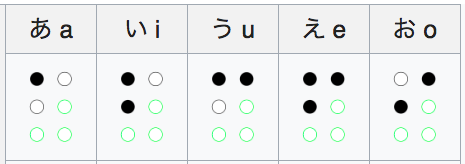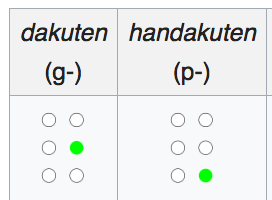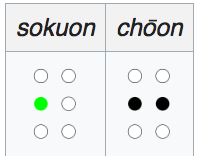Don't wanna be here? Send us removal request.
Text
Vision
Here’s a little something about residual vision.
Food for thought for writers.
Every little bit of vision allows someone to function differently.
If someone has very limited peripheral vision as though looking through a pinhole, that can still help them walk in a straight line by scanning for a specific location and walking toward it even if they can’t see obstacles, stairs, step ups, or faces. When using technology they might be able to use that vision to read some words or find buttons even if they have to use mostly auditory methods of accessing materials.
Light perception and seeing shapes. Again this can help with walking in a straight line and locating doorways if they can make it out. They might be able to locate objects more easily in their room. They will know when they walk into different lighting between rooms or outside if they walk beneath a building or under a tree.
Loss of central vision means the loss of detail so this person might have no trouble walking around and avoiding things but they may not recognize faces or see if someone is a man or a woman. They might be able to see cars but not any detail or color of the car. They might have a lot of color confusion as central vision decreases because that’s where most of the cone cells are (color vision).
Total vision loss presents challenges of walking in a straight line, and use of more compensatory techniques to locate something in an unfamiliar environment. The examples above might be able to find a free chair in a waiting room or a help desk but someone with no vision might have to call out for help or systematically search for the desk or chair, and then ask. They could feel the difference between an open large room or walking outside but can’t anticipate it until they can hear or feel it.
Just some food for thought about things I’ve experienced with people I’ve worked with. Again, there’s also some instances where people may function as though they are totally blind even though they have vision and some people who are totally blind may have better orientation skills than some that do have vision. It’s all relative and individual.
115 notes
·
View notes
Text
Things NOT To Do If You Encounter A Blind Person (A PSA)
1. Continue walking straight towards them as if they’re going to move out of the way, then get mad when you trip on their mobility aid
2. Try to squeeze around them in queues/crowds for the express purpose of sneakily going first
3. If asked for help finding something, don’t say “it’s over there” or point. It’s the exact opposite of helpful
4. Cut them off while walking… ESPECIALLY in the middle of a road!
5. Pretend like they don’t exist just because that’s more convenient than the alternative (looking at you, rail staff)
6. Stare at their mobility aid. We’re not zoo animals.
7. Touch/talk to/distract in any way their guide dog. You’re literally potentially endangering someones life. Stop it
378 notes
·
View notes
Text
We need your help. Please call Your U.S. Representative at 202-225-3121 and ask for your representative by name (or go to
https://www.house.gov/representatives
to look it up)
While I am grateful that the Senate passed a bill that will ultimately help millions of Americans, it is unfortunate that the language introduced by Senator Alexander suspending compliance with IDEA for a year made its way in. If passed by the House and signed by POTUS, states will have the prerogative to step back from their commitments to our students for up to a year.
We ask you to communicate your concerns with House members who will likely uphold IDEA standards and bring a stronger position to conference committee with the Senate for final agreement on language.
No bill is pe rfect and we may need to accept reasonable extension of deadlines, but giving each state permission to put students with special needs aside for a year is unacceptable.
Here is a script you can use during your calls. Feel free to modify it as needed:
Sample script:
Good morning, my name is _____. I live in ______.
I am calling to express my opposition to any attempts by Congress or the Department of Education that weaken the rights of students with disabilities to receive educational services during the novel coronavirus pandemic.
Just as all kids do, students with disabilities need to maintain their reading and math skills so that they don’t fall behind and they can advance into the next grade in the fall. They also need continued instruction in braille, technology, independent living skills, and orientation and mobility instruction.
Ignoring the needs of students with disabilities will only lead to them falling behind academically, less likely to graduate, and less likely to have the academic and life skills necessary to find employment. Education is critical for all children.
Please call or send messages your House members today regarding the CARES Act
(Coronavirus Aid, Relief, and Economic Security Act)
#CARES Act#us politics#politics#government#IDEA#education#disability#visually impaired#petition#house of representatives
0 notes
Text
We need your help. Please call Your U.S. Representative at 202-225-3121 and ask for your representative by name (or go to
https://www.house.gov/representatives
to look it up)
While I am grateful that the Senate passed a bill that will ultimately help millions of Americans, it is unfortunate that the language introduced by Senator Alexander suspending compliance with IDEA for a year made its way in. If passed by the House and signed by POTUS, states will have the prerogative to step back from their commitments to our students for up to a year.
We ask you to communicate your concerns with House members who will likely uphold IDEA standards and bring a stronger position to conference committee with the Senate for final agreement on language.
No bill is pe rfect and we may need to accept reasonable extension of deadlines, but giving each state permission to put students with special needs aside for a year is unacceptable.
Here is a script you can use during your calls. Feel free to modify it as needed:
Sample script:
Good morning, my name is _____. I live in ______.
I am calling to express my opposition to any attempts by Congress or the Department of Education that weaken the rights of students with disabilities to receive educational services during the novel coronavirus pandemic.
Just as all kids do, students with disabilities need to maintain their reading and math skills so that they don’t fall behind and they can advance into the next grade in the fall. They also need continued instruction in braille, technology, independent living skills, and orientation and mobility instruction.
Ignoring the needs of students with disabilities will only lead to them falling behind academically, less likely to graduate, and less likely to have the academic and life skills necessary to find employment. Education is critical for all children.
Please call or send messages your House members today regarding the CARES Act
(Coronavirus Aid, Relief, and Economic Security Act)
0 notes
Photo

Braille Literacy Month is celebrated every January to honor the birth of Louis Braille. Louis Braille was born on January 4, 1809 and is remembered for developing a system of reading and writing through the use of raised dots that could help blind or visually impaired people. Did you know the Braille system was originally based on a military code called ‘night writing’? This code was developed by Charles Barbier in response to Napoleon Bonaparte’s wishes to have his French army communicate at night. The slate and stylus tools pictured above were used in the 1900s.
43 notes
·
View notes
Text
fyi sighted people knowing braille is incredibly helpful
imagine being able to write out a note to your blind loved one or colleague for them to read later. imagine being able to translate a visual sign into braille for LONG TERM use rather than just telling them what it says
not every single sign and line of text has a braille version, i’ve gotten into lifts and noticed there’s no braille. why the fuck is there no braille?? i keep thinking: why the fuck isn’t there braille on everything??
sighted people knowing braille and methods of writing in braille becoming increasingly accessible to the community as a whole is so important
sometimes situations don’t call for sound, sometimes sound is inappropriate or inconvenient. a recording device or phone requires power, why bother with that if you can leave a goddamn note for them just like you would for a sighted person: a note that needs no power, it’s just there to read any time.
also, sighted people knowing braille also opens up a whole world of social interaction for people who have neither sight or hearing. deaf blind people would be able to talk to SO MANY PEOPLE and be included in SO MANY MORE THINGS if more people knew braille
it’s not rude to learn braille if you’re not blind, it’s actually incredibly useful and considerate
braille needs to be normalised as a language not just for people who cannot see, the same for sign language, it’s not Other it’s not exclusive; it’s a language anyone can learn and it would make the world an easier place for whose who NEED braille to navigate
75 notes
·
View notes
Photo

Braille Bricks, Braille Alphabet into LEGO-like modular bricks.
Nonprofit Dorina Nowill Foundation partnered with Lew’Lara TBWA.
189 notes
·
View notes
Text
PSA for people being nice and holding the door open for blind/visually impaired people:
please say when you’re holding the door. think about it friends, we’re expecting a door and when there isn’t one, it’s very disorientating. we appreciate that you hold doors for us. but if you could just give us a ‘I got the door’ so we don’t get lost, that would be awesome thank you
72 notes
·
View notes
Text
October 15th is white cane awareness day!
Here’s a little psa about white canes:
- They help detect obstacles and work as a mobility aid. When I use my cane, I can detect differences in elevation (stairs) as well as obstacles (doors, etc)
- They let other people know that I’m severely visually impaired
- Drivers must yield to a person with a white cane
- My cane doesn’t detect everything. Definitely warn me about the tree branch about to smack me in my face
- If you see someone with a white cane and want to offer help, DO NOT just grab us. What if a stranger grabbed you and you couldn’t see them? Yeah, not fun. Ask us before you touch us if we need help. Typically I can navigate a building, but in a busy intersection a little assistance is useful.
- If you’re curious about something, just ask! I’m always happy to answer questions
[ID for images below: first image is of my folded white cane on a grey sofa. Second image is a bathroom mirror selfie where I’m holding my cane. I’m wearing black jeans and a crop top shirt that says “snowday”]


4K notes
·
View notes
Photo






ART: New Printing Tech Allows the Blind to Touch Priceless Paintings
The Museo del Prado in Madrid launched an initiative to help visually impaired visitors experience works of art through touch.
Keep reading
3K notes
·
View notes
Text
Fun Fact: Blindness is legally defined in the USA almost entirely through visual acuity. You need to have “20/200″ vision or worse. (That’s 6/60 in Metric) However if your vision is 20/100 you cannot be licensed to drive. In other words you can be disabled enough by your vision to suffer one of the most socially severe effects in our car-addicted society, and NOT qualify for any assistance
Additionally while blindness is most commonly associated with eyes that for whatever reason cannot perceive light or which have severely blurred lenses, other problems such as the nerves which control eye movement, light adjustment, and focus can be just as impairing but not qualify you as “Legally Blind”
This means you could have 20/100 vision, be unable to focus your eyes, walking straight into people at your local grocery store, and still not be legally permitted to carry a white can because you are not the correct type of Blind.
345 notes
·
View notes
Text
Braille literacy among the blind / visually impaired has actually gone down - and one reason for this is the ubiquitous presence of smart-screen devices like tablets and smartphones with voice-activated commands and audio feedback and the like but zero tactile feedback. So like nobody really wants to invest in making proper braille tablets that offer tactile feedback as the primary display mechanism because well… It’s inconvenient for sighted people to produce something they aren’t inclined to use themselves. (And for clarity there are a few models of Braille Tablets - but to my knowledge they are all either A - Expensive as Hell, or B - Perpetually stuck in-development while the company tries to figure out how they can be more profitable.) The potential inconveniences that audio-reliance has for blind / visually impaired people is rarely acknowledged or considered. Some of us are hearing impaired! Sometimes we want to read in areas where headphones aren’t appropriate. Sometimes we don’t want to have to pay $20 or whatever for an audiobook that has been copywritten and probably owned by a major media corporation. Or we want to read things that haven’t been made INTO audio-books without relying on awful robotic TTS voices.
1K notes
·
View notes
Text
Japanese Braille (and why it’s easier than written Japanese)
Okay, so I thought I’d write a post about a topic that’s really close to my heart, being a Legally Blind person: Japanese Braille.
There are 1.64 million people in Japan with an Uncorrectable Vision Impairments, 187,000 of which are listed as Blind.
Japanese Braille sounds really difficult, but in reality it’s not actually that hard! Especially once you get a few hundred Kanji in, learning Japanese Braille is honestly super simple.
First of all, a note: Japanese Braille (99% of the time, at least) is completely phonetic; there’s no differentiation between Hiragana, Katakana, and Kanji like there is in Written Japanese.
Additionally, it follows really basic patterns; with the exception of a few Punctuation-type characters, you basically only have to learn 21 basic pieces, as everything else follows basic patterns beyond that.
First off, the vowels:

All other Syllables use these same Vowels, in the same places
Following this, there comes all of the Consonants



Note that the vowels are in the exact same spot as in the AIUEO characters, just with an added mark for the Consonant.
Here is probably a good place to point out: Dakuten is marked by a single dot on the middle of the right side of the cell, placed BEFORE the character that gets changed by the Dakuten (Handakuten is the same, except the dot was lowered to the bottom right of the cell)

You’ll note that this brings us up to 14 characters…. where are all the rest?
If you’re observant, you’ll note that Ya, Yu, Yo, and Wa and (W)o are missing from the chart here. That’s because these 5 characters break the rules, just a little bit.


(Note that the Wi & We characters are only there for Ancient Japanese; don’t worry if you never learned them before, they’re gone from Japanese now)
Note that the -y- character there is placed BEFORE another consonant to make it a _y_ version of it (i.e. put it before Ka to make Kya), and that the -w- character is used to make all the irregular Little Characters (i.e. put it before Ha and you’ll get Fa).
There’s 2 more characters to learn, and they’re pretty easy.
They’re made for doubling consonants, and doubling vowels respectively

For example, putting a Sokuon before Ka makes Kka, and a Chouon AFTER A makes Aa
Anyways, that covers all the fundamentals of Japanese Braille, hopefully enabling even more people to make Blind Literacy possible, in an entire other language!
3K notes
·
View notes
Text
Okay, everybody, I don’t talk much on here but this is important and I can’t find any other posts about it here.
There’s a little app called Be My Eyes. It’s been on iPhone for a while now and on October 5th, it’ll be out for Android too.
What is Be My Eyes, you might wonder? Well, it’s a community of people helping people. Namely, sighted people helping blind people with simple tasks that require sight to be simple.

See the picture?
(for those who can’t see, the picture shows the app I’m action. It shows a phone camera pointed at two red cans of food. Text above depicts a sighted person explaining the right can is a can of tamatoes.)
In short, if you’re blind and have every had trouble finding your blue shirt, the app was made for you.
If your sighted and want to help, the app is for you too.
If you’re not, reblog and spread this so more people can see.
Thank you for reading and reblogging.
21K notes
·
View notes


